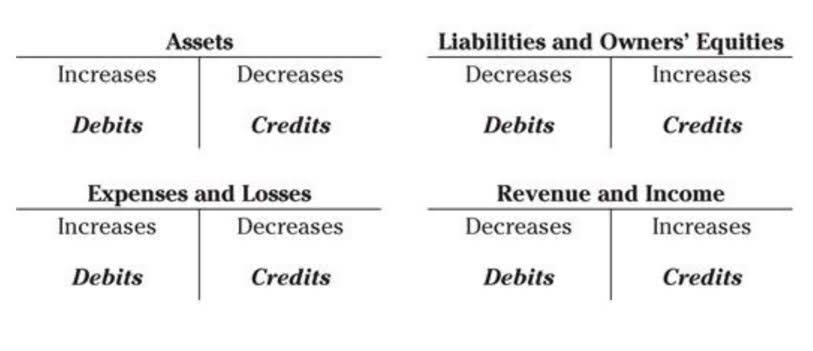
Being aware of these challenges can help businesses maintain the accuracy and relevance of their cash flow analysis and make more informed decisions. By evaluating cash flow ratios and conducting cash flow forecasting, businesses can detect trends, address liquidity concerns, and make informed decisions regarding operations, investments, and financing. Calculate cash flow management strategies for small business cash flow from financing activities by summing the cash inflows and outflows related to debt and equity financing. The article offers useful insights into the importance of cash flow management for businesses and how it can be measured and improved.

Cash Management

With a positive cash flow, you can cover payroll, pay contractors on time, and set aside funds for unexpected delays, late client payments, or contract cancellations. It also allows bookkeeping for cleaning business you to invest in marketing, hiring, and software upgrades to support growth. Companies can improve cash flow by speeding up receivables, reducing inventory levels, negotiating better payment terms with suppliers, and cutting unnecessary expenses.

Get Any Financial Question Answered
Thus, when a company issues a bond to the public, the company receives cash financing. In contrast, when interest is given to bondholders, the company decreases its cash. It produces what is called the net cash flow by breaking down where the changes in the beginning and ending balances came from. A financial professional will offer guidance based on the information provided and offer a no-obligation call to better understand your situation. For example, repairing equipment instead of replacing it can ease outflow pressure. If you have a business in a highly cyclical industry, you can be prone to cash flow problems.
Cash Flow From Operating Activities (CFO)
The typical guideline is to save enough to cover three to six months of operating expenses, although some folks aim higher. This is your financial cushion—a stash of money that you can tap into for emergencies. Cash flow-based loans, lines of credit, or invoice factoring might be your safety nets when your inflows slow down. The goal is to shorten your cash conversion cycle—making sure money gets from your customers’ hands into yours swiftly.
- This forward-looking approach enables you to plan for seasonal fluctuations, anticipate cash flow needs and adjust spending or investment strategies accordingly.
- Businesses can identify potential risks and opportunities by conducting sensitivity analysis and developing strategies to manage them effectively.
- If you have debt that is tied to something that is losing value or has a higher interest rate, pay it off as fast as you can.
- This type of financing can provide businesses with access to large amounts of capital without the need for immediate repayment.
- So, this metric specifically reflects how much cash a company can pay out to its creditors or distribute among investors.
- Over the past decade, I’ve worked with all sorts of people preparing for retirement.
Customers might put off paying if your payment system isn’t convenient. Make it easy for people to pay you — and for you to bill customers — by using invoicing software like FreshBooks, Zoho Invoice, Vcita, or QuickBooks. Management can use the information in the statement to decide when to invest or pay off debts because it shows how much cash is available at any given time. Using this method, cash flow is calculated through modifying the net income by adding or subtracting differences that result from non-cash transactions. This is done in order to come up with an accurate cash inflow or outflow. It can be considered as a cash version of the net income of a company since it starts with the net income or loss, then adds or subtracts from that amount to produce a net cash flow figure.
Useful as a Basis for Short-Term Planning

At a basic level, a company’s ability to create value for investors is determined by its ability to maximize long-term free cash flow (FCF) and generate positive cash flows. Free cash flow is the cash a business generates from normal operations after subtracting money spent on capital expenditures balance sheet (CapEx). Cash flow fluctuations can negatively impact businesses without proper management.
- Cash flow analysis has numerous applications in business decision-making, including business valuation, creditworthiness assessment, investment decision-making, and financial health monitoring.
- Building strong relationships with suppliers can also help in negotiating extended payment terms when needed.
- Using integrated platforms that connect invoicing, payments and financial reporting streamlines operations and enhances visibility.
- And instead of offering a single pricing option, create different tiers.
- With a positive cash flow, you can cover payroll, pay contractors on time, and set aside funds for unexpected delays, late client payments, or contract cancellations.

All in all, companies looking to responsibly manage their cash flow must strike a delicate balance between the needs for strong vendor relationships and the need for cash. Increasing DPO can improve cash flow for businesses looking to make purchases or acquire assets. For example, Macy’s took 164 days to settle payments in 2021, increasing their DPO by about 30 days from 2020. Mondelez International also reported an increase in cash flow due to increasing its DPO. A powerful tool, AP analytics increases transparency by extracting and visualizing detailed data from AP records.
- Many small business owners undervalue their products or services and end up with razor-thin margins.
- To address this issue, establish clear payment terms, send timely reminders, and implement a systematic credit control process.
- Offering short-term credit to customers in the form of net-30 or net-60 payment terms can create a cash flow bind for your business.
- It specializes in integrating your cash flow analysis with the overall financial picture of your business.
- However, over the years, I have noticed a theme between those who have enough saved for retirement (based on their expectations) and those who do not have enough.
Effective cash flow management supports more informed, timely decision-making to help your company stay in business without seeking additional revenues or investments. Effective cash flow management helps you track revenues and expenses practically, identifying areas for improvement before they bite you in the butt. Effective cash flow management involves various methods of cash flow management. However, finance teams prefer using free cash flow, operational cash flow, and cash flow prediction formulas to guide cash flow management strategies.. It will cover the meaning of cash flow management, goals, examples, issues, and how leveraging automation and cash management solutions can help businesses navigate those challenges seamlessly. Finally, businesses can use inventory management strategies to their advantage, adopting an approach to inventory that suits their cash flow aims.
